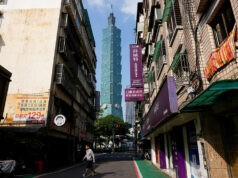FITCH Solutions Macro Research said the Philippine economy could contract by as much as 2% with a recession looming in the wake of the coronavirus disease 2019 (COVID-19) public health emergency.
The latest downgrade comes a week after Fitch Solutions cut its gross domestic product (GDP) outlook to minus 0.5%, after having issued a 6.3% forecast for 2020 before the pandemic.
“We are becoming increasingly aware of how significant the impact of lockdown measures can be on growth readings. As such, with the Philippines in lockdown through April and into May, the drag on growth will pull the economy into recession,” Fitch Solutions said in a note issued Monday.
Even with only two weeks of lockdowns falling within the three months to March, GDP fell to minus 0.2% in the first quarter, the first drop since the 6% contraction in the fourth quarter of 1998.
Bangko Sentral ng Pilipinas (BSP) Governor Benjamin E. Diokno said the GDP decline in the first three months was due to the Taal eruption in January, some travel restrictions that were imposed as early as February and the lockdown that started in mid-March.
The first quarter GDP result was a reversal from the 6.7% growth in the previous quarter as well as the year earlier 5.7%. Growth in 2019 was at 6% based on 2018 prices, slightly higher than the 5.9% previous estimate using 2000 prices.
“While we expect lockdown measures to be eased over Q2 2020 and Q3 2020, there will still be some drag initially from containment rules and external demand backdrop will remain subdued,” Fitch Solutions said.
“Ultimately, the Philippines’ dependence on household consumption (at 74.6% of GDP in 2019) will prove a vulnerability during the lockdowns and as such, our outlook has been tempered,” it said.
“Household consumption will prove vulnerable through the year on the back of a worsening outlook for household incomes and lower confidence,” it added.
The weaker outlook for remittances amid an impending global recession which could slash employment levels will also affect spending as cash remittances fuel consumption in the Philippines, it added.
“The US accounts for around 40% of remittances, but with unemployment in the US likely to prove its worst since the Great Depression, the outlook for remittance flows has deteriorated significantly,” Fitch Solutions said, adding that Overseas Filipino Workers (OFWs) in the cruise and service sectors are also vulnerable to layoffs or lower income during this pandemic.
In 2019, cash remittances grew 4.1% to $30.133 billion. With the outbreak dimming economic prospects around the world, the BSP expects remittances to fall between 0.2% and 0.8% this year.
Mr. Diokno has said about 20,000 to 30,000 OFWs have lost their jobs so far.
Another indicator of dimming consumer confidence is the rise of household savings to 37.8% in the first quarter of the year from the 36.3% a quarter earlier, Fitch Solutions said, citing data from the Philippine Statistics Authority.
“The rise in households with savings indicates a scaling back of consumption. As confidence declines, we expect more households to turn to savings given the weaker outlook for incomes and fear of potential health care costs from the COVID-19 outbreak,” Fitch Solutions said.
External demand is unlikely to provide a lifeline, Fitch Solutions said.
“We believe exports will experience a deeper contraction over the coming months,” it said, noting that exports and imports have contracted 3% and 9%, respectively, in the first three months.
“Weak growth outlooks for the Philippines’ key export markets: the US, Japan and China — which together account for 45% of goods exports — are all experiencing sharp growth slowdowns and this too will weigh on the growth outlook,” it added.
Fitch Solutions added that further fiscal stimulus will be needed to counteract a slowdown.
“A large fiscal package could boost domestic confidence and we believe the government has scope, given improved reserve buffers and public debt at 41.5% of GDP in 2019,” it said.
Fitch Solutions said that despite the government’s commitment to fiscal measures that amount to about 1.1% of GDP, fiscal measures are still restrained in terms of scope compared to those done in Thailand, where measures account for 9% of GDP, as well as the loan guarantees issued by Malaysia. — Luz Wendy T. Noble



